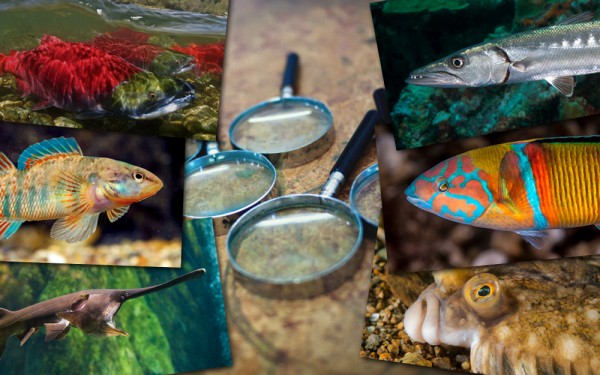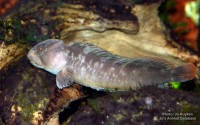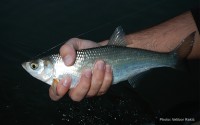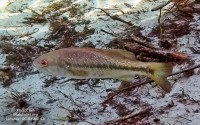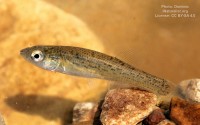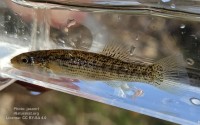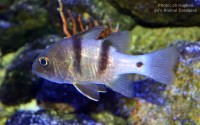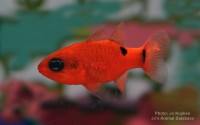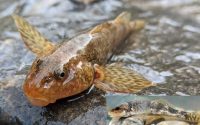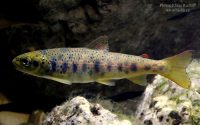Barred bichir
(Polypterus delhezi)
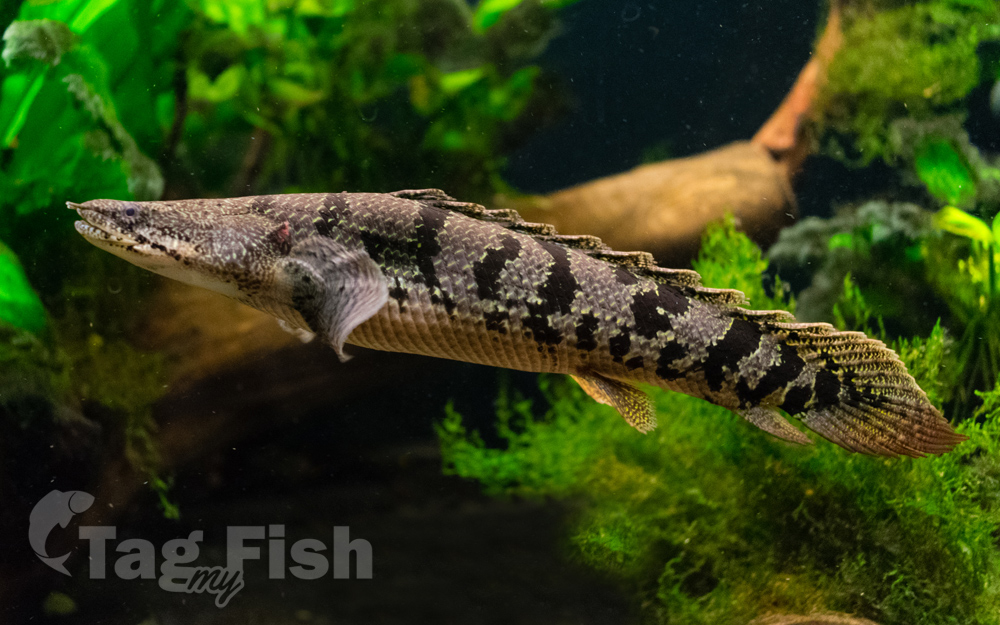
Classification
General data
The barred bichir, armoured bichir, bandback bichir, or banded bichir (Polypterus delhezi) is an elongated fish found in the Congo River, specifically in the upper and middle portions. This species is one of the more commonly available in commercial pet stores.
Description
P. delhezi is greyish in color, and specks of yellow or green coloration have also been observed. Compared to the dorsal side, the ventral surface seems to be lighter in color. It is a rather unique species from a notably old group of fishes, possessing several traits than set them apart from their close relatives.
The dorsal fin is very distinct in its shape, made up of a series of individual spines. They have a mostly cartilaginous body, like sharks, and the primitive shape of its jawbones, more like a salamander than a fish. Another notable characteristic of P. delhezi is its modified swim bladder. In bony fish, the swim bladder is an internal, gas-filled chamber, an organ that likely evolved to help fish control their buoyancy and stay at their preferred water depth. In P. delhezi, the swim bladder also functions as a type of lung. The swim bladder is divided into 2 parts, of which the right hand section is considerably larger. This functions as an accessory breathing organ and means the fish can survive out of water for some time, provided it is kept moist. For this reason, Polypterus is the only known vertebrate to have a lung, but no trachea.
Another aspect of the barred bichir, which illuminates its primitive lineage and surviving characteristics, are its scales. Scales vary significantly in shape, size, and consistency, and the morphology of fish scales can generally be used to identify the species of fish that it came from. Its scales are primitive as well, each being covered with ganoin, a substance with similarities to tooth enamel. Similar to the type of scales found in sturgeons, paddlefishes, gars, and bowfin, bichirs also share the trait of ganoid scales.
Deriving from cosmoid scales, they are thicker compared to other types of scales and consist of a layer of dentine and ganoine, an inorganic bone salt. They also connect with peg-and-socket like joints, thus ganoid scales do not overlap with each other. Each scale is shaped like a rhombus and is non-overlapping with those surrounding it.
